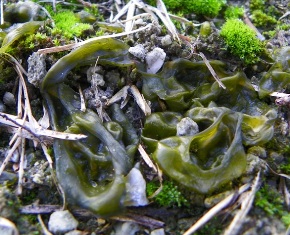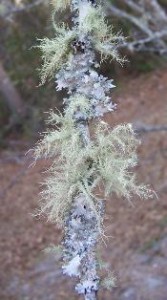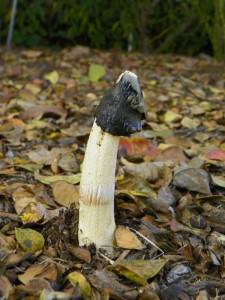What Is Growing in My Yard?
go.ncsu.edu/readext?199537
en Español / em Português
El inglés es el idioma de control de esta página. En la medida en que haya algún conflicto entre la traducción al inglés y la traducción, el inglés prevalece.
Al hacer clic en el enlace de traducción se activa un servicio de traducción gratuito para convertir la página al español. Al igual que con cualquier traducción por Internet, la conversión no es sensible al contexto y puede que no traduzca el texto en su significado original. NC State Extension no garantiza la exactitud del texto traducido. Por favor, tenga en cuenta que algunas aplicaciones y/o servicios pueden no funcionar como se espera cuando se traducen.
Português
Inglês é o idioma de controle desta página. Na medida que haja algum conflito entre o texto original em Inglês e a tradução, o Inglês prevalece.
Ao clicar no link de tradução, um serviço gratuito de tradução será ativado para converter a página para o Português. Como em qualquer tradução pela internet, a conversão não é sensivel ao contexto e pode não ocorrer a tradução para o significado orginal. O serviço de Extensão da Carolina do Norte (NC State Extension) não garante a exatidão do texto traduzido. Por favor, observe que algumas funções ou serviços podem não funcionar como esperado após a tradução.
English
English is the controlling language of this page. To the extent there is any conflict between the English text and the translation, English controls.
Clicking on the translation link activates a free translation service to convert the page to Spanish. As with any Internet translation, the conversion is not context-sensitive and may not translate the text to its original meaning. NC State Extension does not guarantee the accuracy of the translated text. Please note that some applications and/or services may not function as expected when translated.
Collapse ▲Ever find something in your yard and wonder, “What is that?” If so, you are not alone. Throughout the year people bring bugs, plants, and mysterious growths found in their yard to their local Cooperative Extension office for identification. Among the items most frequently brought in that fall into the category of “mysterious growths” are algae, lichen, and stink horns. All three of these are common throughout our region, which means there is a good chance you may find them in your yard too.
Algae
What’s green, gooey and mainly shows up after rainfall? Nostoc commune, a type of blue green algae sometimes referred to as star jelly or witch’s butter. Under warm, rainy conditions this land loving algae forms dark green, jellylike mats in lawns, driveways, and parking areas. When the sun comes out it quickly begins to dry up, progressing from a gummy blob to a dry crisp mat within a few hours. Drying out does not kill this algae; It simply goes dormant, waiting for the next rainfall to rehydrate and plump up again.
Abundant rainfall made 2012 a great year for this type of algae to multiply in our area. Other than being unpleasant to walk on, star jelly is not harmful and is actually eaten in some parts of the world. It is most often found where the soil is very hard and compacted, and can grow in shade or full sun. In lawns, it grows where the grass is already weak and thin, leading many to incorrectly think it is the cause of their lawn’s decline. In most cases the real issue is either extreme soil compaction or over irrigation, or both.
When applied regularly, some fungicides will help control star jelly but will not get rid of it permanently. On hard surfaces like driveways and parking areas, it can be raked up when wet and added to the compost pile. In lawns, the best way to deal with star jelly is to modify your irrigation schedule and aerate the soil in early summer.
Lichen
Have you ever noticed a grayish-green crusty or mossy looking growth on the stems of trees and shrubs in your yard? If so, then you have encountered a lichen (pronounced “liken”), an interesting life form composed of an algae and a fungus living together. Lichens will grow on anything that sits still long enough, including slow growing plants, tree trunks, rocks, fence posts, fallen logs, tombstones, and even the ground.
Lichens do not harm the plants they grow upon, but often plants that are struggling will be covered in them. When lichens are found growing prolifically on a plant that also has lots of dead twigs and branches it is usually a sign that something more serious is wrong such as root rot, drought damage, or soil compaction. Diagnosing and correcting the underlying problem is the only way to return these plants to health.
Stink Horns
Stink horns are a type of mysterious growth that is usually smelled before they are seen. True to their name, these mushrooms emit an order of rotting flesh. They are usually found growing in landscape beds with hardwood mulch. One of the most common in our area is the octopus stinkhorn, which looks like an orange octopus or squid popping up out of the mulch.
Other types of stinkhorns, of the genus Phallus, take on a more x-rated appearance, resembling a certain part of the male anatomy. All stinkhorns grow from egg-like sacks that can be found in the mulch they inhabit. The stinkhorn and the egg-like sack are the reproductive parts of a larger body mass, which is made up of white, thin threads known as hyphae. Like all mushrooms, removing just the visible growth does not get rid of the fungus because the majority of its body is left behind.
Despite the way the smell, stinkhorns are harmless. Individual stinkhorns only persist for a few days and are most common in the spring and fall. Switching from hardwood mulch to pine bark mulch or pine straw can help reduce the occurrence of stink horns.
Learn More
Visit your local Cooperative Extension office to learn more about gardening and landscape care. Go to https://www.ces.ncsu.edu/local-county-center/ to find your county Extension center.
- If you live in Pender County, call 910-259-1235
- In New Hanover County, call 910-798-7660
- In Brunswick County, call 910-253-2610
- In Onslow County, call 910-455-5873
- In Duplin County, call 910-296-2143






